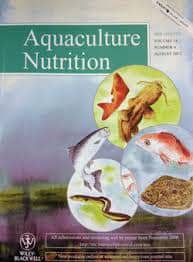Effects of increased protein, histidine and taurine dietary levels on egg quality of greater amberjack (Seriola dumerili, Risso, 1810).

Abstract
A well-balanced diet adapted to fulfil the specific nutritional requirements of greater amberjack (Seriola dumerili) would contribute to optimize reproduction and spawning quality. The main objective of the present study was to examine the effects of supplemental histidine, taurine and protein in broodstock diets, on egg quality of greater amberjack.
Twelve broodstocks were distributed in three 40 m3 circular tanks and fed three different diets, one high in histidine, another in taurine and the third one in protein contents. Overall the best spawning quality was obtained histidine levels were elevated from 1 to 1.5%, increasing the relative fecundity, fertilization rates, egg viability, hatching rates, larval survival, egg protein contents, and egg and larval size, denoting the importance of this amino acid for embryo and larval development.
The increase of taurine from 0.3 to 1.1% in diets for greater amberjack increased the relative fecundity in comparison to fish fed higher protein levels. Fertilization rates tend to increase with the elevation of dietary taurine and were not significantly different from those of broodstock fed higher histidine levels. Besides, dietary taurine increased egg diameter and taurine contents. Increase in dietary protein contents from 51 to 56% lead to an increase protein content in egg, as well as a larger yolk sac volume, but did not improve any of the spawning quality parameters.
In conclusion, the results of this study have pointed out the importance of raising histidine contents in broodstock diets from 1 to 1.5% to optimize the reproductive performance of greater amberjack. Besides, the study showed that taurine levels in broodstock diets increased fecundity, maintaining good fertilization rates, but further studies must be conducted to determine the optimum taurine dietary levels.

